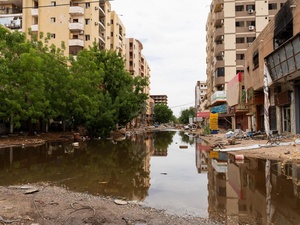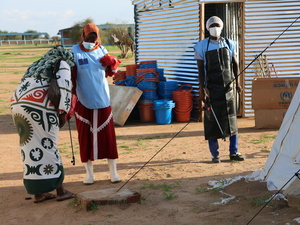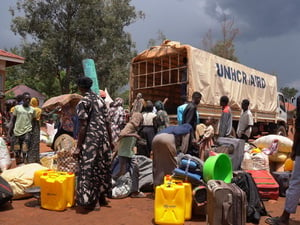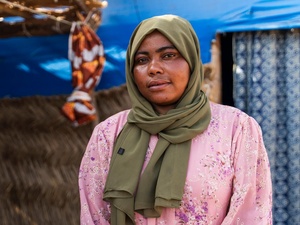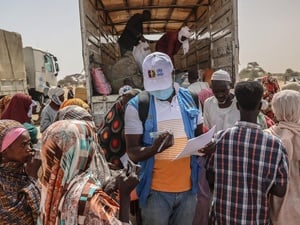Chad: 900 Sudanese refugees moved so far
Chad: 900 Sudanese refugees moved so far
Nearly 900 Sudanese refugees have moved so far from the Chadian border town of Tine to a transit centre at Touloum, 80 km from the border. Yesterday, UNHCR and its partners transferred 490 refugees from Tine-Chad. Two convoys over the weekend moved another 372 refugees. Convoys from Tine are scheduled to take place every day except Fridays until the 4,361 refugees registered in the town have reached the safety of the transit centre.
The first movement on Saturday took place in very difficult conditions as a sand and wind storm considerably reduced visibility for the transfer. A UNHCR team driving along the road to the airport to collect the refugees described apocalyptic scenes of goats and donkeys lying dead on the sand as families of refugees hid behind bushes to protect themselves from wind and sand. Many refugees have lost their livestock to the cold and lack of feed. The refugees are generally in good health but live in precarious conditions. In addition, the proximity of the border with Sudan - only a few hundred metres away - and the presence of military forces on the other side made it all the more urgent to move the refugees further inside Chad.
UNHCR teams who organized yesterday's convoy reported that they passed many refugees who were walking from Tine to the transit centre.
Upon arrival in Touloum, the refugees receive a 15-day food ration provided by the World Food Programme, as well as blankets, jerry cans and soap provided by UNHCR. A UNHCR water truck is on the site and regularly delivers water from the town of Iriba. UNHCR is working together with GTZ, SECADEV, CNAR, MSF-Belgique and NCA to relocate the refugees from Tine to Touloum.
Meanwhile, a UNHCR team is scheduled to travel at the end of this week to Bamina, 30 km north of Tine as local authorities and NGOs have reported the arrival of 2,000 new refugees. The refugees are said to be generally in good health but living in makeshift shelters where they remain exposed to sand and wind storms.




